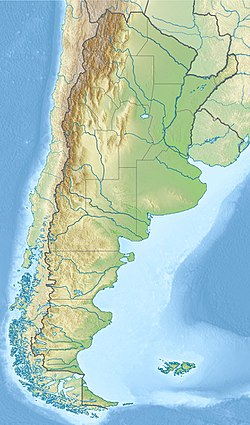| Cerro Carnerero Formation | |
|---|---|
| Stratigraphic range: Toarcian-Bajocian ~ | |
| Type | Geological formation |
| Unit of | Lonco Trapial Group |
| Underlies | Cañadón Puelman Formation |
| Overlies | Los Tobianos Formation |
| Thickness | 440 m (1,440 ft) |
| Lithology | |
| Primary | Claystone, tuff |
| Other | Conglomerate |
| Location | |
| Coordinates | 44°00′S69°30′W / 44.0°S 69.5°W |
| Approximate paleocoordinates | 41°48′S28°30′W / 41.8°S 28.5°W |
| Region | Chubut Province |
| Country | Argentina |
| Extent | Golfo San Jorge Basin |
| Type section | |
| Named for | Cerro Carnerero |
| Named by | Herbst |
| Year defined | 1966 |
The Cerro Carnerero Formation is a geological formation of the Golfo San Jorge Basin in Chubut Province, Patagonia, Argentina. [1]
